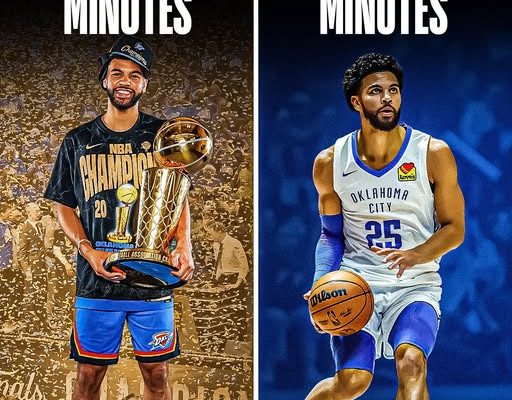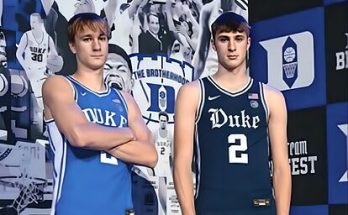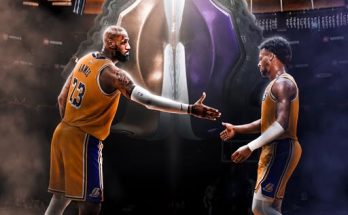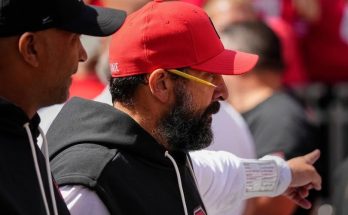It’s not often that you hear about a player going from competing in the NBA Finals to taking the floor in the Summer League just weeks later. Yet that’s the case for Ajay Mitchell, and his story is a fascinating reminder of the grind, the vision, and the developmental trajectory that fuels the NBA machine. Mitchell, who was on the roster of a Finals team, might seem like an unlikely candidate to suit up in July when most stars are resting and rookies or fringe players are fighting for their lives. But Mitchell isn’t just any player. He’s a long-term bet—by both his team and himself—and his presence in the Summer League speaks volumes about where the league is heading and how deep the commitment runs for players hungry to leave their mark.
To understand the significance of Mitchell’s journey, you have to appreciate the context. The NBA Finals, widely viewed as the ultimate test of championship pedigree and talent, typically features the very best in the league. Even the bench players on Finals teams often have years of experience or occupy specific niche roles that are refined through years of grinding in the G-League, international stints, or as developmental pieces in NBA rotations. For Mitchell to have been part of a Finals team, even as a young player, suggests his franchise sees immense potential in him.
Yet, only a few weeks removed from the global spotlight of the Finals, Mitchell found himself back under the Las Vegas sun, competing on courts typically reserved for rookies, undrafted players, or second-year talents trying to cement their place in the league. While that may appear as a step down on the surface, for Mitchell, it’s actually a strategic move—a calculated decision by his franchise and a testament to his mindset.
Summer League is not just for the unproven. It’s a proving ground for potential, a training field for the ambitious. It’s where teams put young players in leadership roles, ask them to carry heavier workloads, and challenge them to expand their skillsets in live-game scenarios. For Mitchell, playing in the Summer League is not about survival—it’s about expansion. He’s already seen what it takes to be around an elite team. Now, he’s working on being an integral part of it.
His Finals experience, albeit limited in actual minutes, was likely instrumental in accelerating his growth. Being in that environment—day in and day out around Hall of Fame-level coaching, veteran leadership, intense preparation, and relentless pressure—builds habits that no practice session or G-League game can replicate. Watching the nuances of playoff basketball, absorbing how his teammates handle adversity, and seeing what it means to compete when the stakes are at their absolute highest, has armed Mitchell with insights that many Summer League players won’t bring to the court.
But that doesn’t mean it’s easy. In fact, Summer League play can be chaotic. The cohesion of veteran teams disappears, replaced by a hunger-fueled, sometimes erratic pace where players are trying to showcase everything they’ve got. It’s less about team basketball and more about individual upside—who can score, who can flash elite defense, who can handle the ball under pressure. For someone like Mitchell, this environment presents a different kind of challenge. He’s not just there to perform—he’s there to lead, to orchestrate, to show that he can stabilize a game while still making the flashy plays that scouts and development staff want to see.
Mitchell’s game is predicated on feel, timing, and control. He’s not a highlight-reel player by nature, though he can certainly produce exciting moments. Instead, his value lies in his ability to read the floor, make the right decision, and influence the flow of the game. In Summer League, where decision-making often takes a backseat to shot-chucking, Mitchell’s approach stands out. It speaks to maturity and a future as a primary ball handler or secondary playmaker in a high-functioning offense.
From a franchise’s perspective, getting him these reps now is crucial. There’s a big difference between being around the team and being a part of the rotation. Mitchell has proven he belongs in the building. Now, he’s proving he belongs on the court. Every possession, every pick-and-roll, every defensive switch he navigates in the Summer League is part of a bigger blueprint—one that likely involves carving out a rotation spot by next season or positioning himself to be the next man up in case of injury or opportunity.
Player development in today’s NBA is no longer a passive process. Teams don’t just draft talent and wait. They invest in environments. They tailor training, they build out individualized plans, and they challenge their players in very specific ways. That’s what’s happening with Mitchell. His Summer League stint is not random—it’s part of a long-term vision. He may not have logged major minutes in the Finals, but his very presence meant something. Now, he’s tasked with taking that exposure and applying it.
This moment also says something about Mitchell’s mindset. Plenty of young players in his position might have declined the Summer League invite. They might have chosen to rest, citing fatigue or injury prevention. They might have leaned on the Finals run as evidence of having already “arrived.” Mitchell didn’t. That’s telling. It reflects a level of professionalism and humility that speaks volumes. He’s not looking for shortcuts or resting on the symbolism of being on a Finals roster. He wants to earn every inch of his career, and that makes him an ideal long-term investment.
Scouts and coaches watching Summer League aren’t just looking for points or dunks—they’re analyzing poise, adaptability, leadership, and growth. And Mitchell is showing that in spades. He’s calling out plays, organizing his teammates, communicating on defense, and embracing the uncomfortable moments. Turnovers don’t rattle him. Cold shooting stretches don’t cause him to panic. These are traits that take years to develop in some players. Mitchell is exhibiting them before his sophomore NBA season.
Let’s also not forget the physical demand. Going from a Finals run—where practices are intense, emotions are high, and the grind is relentless—into another round of games just a few weeks later is no small feat. It requires discipline and excellent conditioning. It also demands that you mentally compartmentalize. You can’t let the glory of the Finals or the pain of falling short distract you from the opportunity in front of you. Mitchell has clearly done that. He’s shown up locked in, prepared to treat Summer League like Game 7.
And that’s what separates long-term bets from temporary stories. Every franchise in the NBA has had flashes in the pan—players who spark briefly but fizzle due to attitude, lack of adaptability, or poor fit. Mitchell is the opposite. His willingness to immerse himself in development, to embrace challenges, to chase growth rather than comfort, is what will keep him around.
In some ways, his Summer League journey is emblematic of a larger truth about today’s NBA: the pathway to stardom isn’t always linear. It’s not just about talent—it’s about work ethic, resilience, timing, and buy-in. Mitchell is displaying all of that in real-time. By choosing to play in the Summer League, he’s telling the league and his teammates that he’s here to grow, here to contribute, and here to win—not someday, but soon.
Mitchell’s ceiling might still be unfolding. He’s not a household name yet, but that’s what makes him a fascinating study. The NBA is filled with players whose names you didn’t know until their breakout season—and most of those seasons were preceded by summers like this. Summers where they embraced the uncomfortable. Where they logged minutes against other hungry players. Where they learned to lead when nobody expected them to.
That’s where Mitchell is now. He’s not a finished product. But he’s also not a mystery. His decision to play in the Summer League, after a Finals run, is a loud and clear declaration that he sees the bigger picture. He’s investing in his future in the most public and vulnerable way possible—on the court, in front of scouts, fans, and media alike. And the ones who do that? They tend to stick. They tend to surprise. They tend to outlast the doubters.
So when the season rolls around again, and Mitchell finds himself deeper in the rotation, playing meaningful minutes, and trusted in late-game scenarios, it won’t be by accident. It will be the byproduct of a choice made in July. A choice to work when others rested. A choice to lead when others watched. A choice to bet on himself, not for the short term, but for the long haul.
Ajay Mitchell isn’t just another Summer League player. He’s a Finals-tested, forward-thinking, high-IQ, long-term bet. And if the last few weeks are any indication, that bet is starting to pay off.



